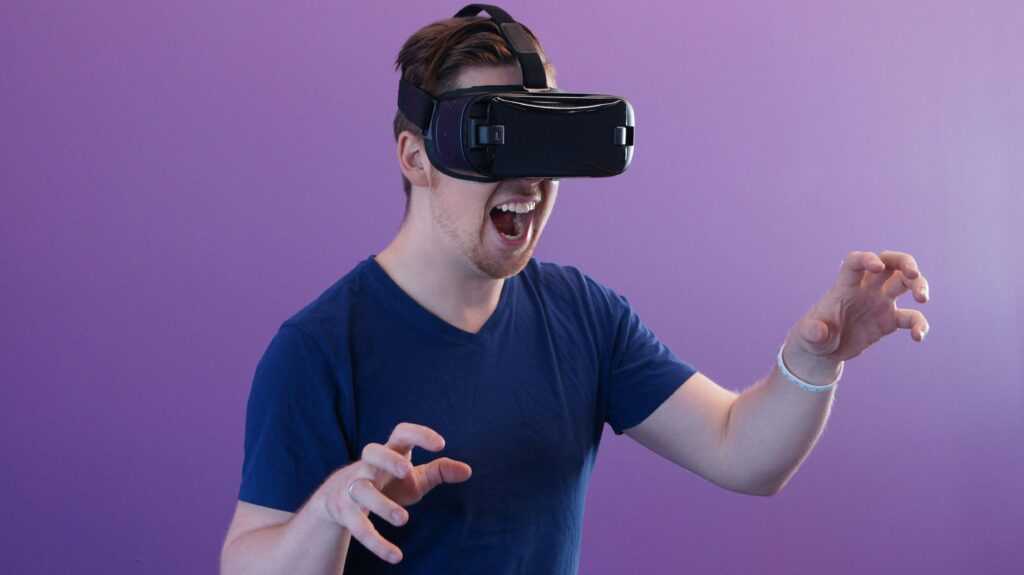Exciting advancements in technology have paved the way for a new era in gaming – cross-platform virtual reality (VR) gaming. As a gaming enthusiast, I’ve witnessed the evolution of VR from a niche concept to a mainstream phenomenon. In this article, I’ll delve into the fascinating world of cross-platform VR gaming and explore how it’s shaping the future of interactive entertainment.
From Oculus Rift to HTC Vive, VR headsets have revolutionized the way we experience games, blurring the lines between the real and virtual worlds. As I’ll discuss, the development of cross-platform compatibility allows players to immerse themselves in VR experiences regardless of the device they own.
Join me on this journey as we uncover the challenges, innovations, and endless possibilities that cross-platform VR gaming brings to the gaming industry.
Overview of Cross-Platform VR Gaming
Exploring the landscape of cross-platform virtual reality (VR) gaming unveils a realm where players seamlessly transcend device boundaries, diving into immersive virtual worlds regardless of their hardware preferences. In this interconnected realm, the convergence of diverse platforms fosters a unified gaming experience, heralding a new era of accessibility and collaboration in the gaming industry.
The evolution of VR technology has revolutionized how gamers engage with virtual environments. VR headsets such as Oculus Rift and HTC Vive pave the way for unparalleled interactions by merging physical movements with digital simulations, blurring the distinction between the tangible and the virtual.
These advancements have propelled VR gaming from a niche pastime to a mainstream sensation, captivating audiences worldwide. One of the pivotal aspects driving the widespread adoption of VR gaming is the concept of cross-platform compatibility.
By transcending device constraints, players can engage in multiplayer experiences, cooperative gameplay, and competitive showdowns without being limited by the type of VR headset they own. This interoperability not only enhances player engagement but also fosters a sense of unity among gamers, regardless of their chosen VR ecosystem.
As cross-platform VR gaming continues to flourish, it opens up a myriad of possibilities for developers, enabling them to create innovative experiences that cater to a diverse array of players. The seamless integration of various platforms not only challenges traditional gaming conventions but also encourages cross-pollination of ideas, pushing the boundaries of creativity and immersion in virtual realms.
Embracing the interconnected nature of cross-platform VR gaming invites players and developers alike to embark on a collaborative journey towards unlocking the full potential of immersive gaming experiences. By fostering inclusivity, innovation, and boundless creativity, cross-platform VR gaming stands as a testament to the transformative power of technology in shaping the future of gaming.
Evolution of VR Gaming Technology
Virtual reality (VR) gaming has undergone significant transformations over the years, shaping the way players interact with digital worlds. Let’s explore the pivotal moments in the evolution of VR gaming technology.
Early VR Gaming Systems
In the early days of VR gaming, pioneers like the Virtuality Group introduced rudimentary VR systems that laid the foundation for future advancements. These systems, although rudimentary by today’s standards, sparked the imagination of gamers worldwide, offering a glimpse into the immersive potential of virtual reality.
Advancements in VR Hardware
The evolution of VR hardware has been marked by remarkable advancements in display technology, motion tracking, and ergonomics. From the bulky headsets of the past to the sleek and lightweight designs of today, VR hardware has undergone a revolution.
High-resolution displays, precise motion sensors, and comfortable form factors have elevated the VR gaming experience, transporting players to incredibly detailed and lifelike virtual worlds.
Importance of Cross-Platform VR Gaming
Enhancing Player Connectivity
By allowing gamers to join virtual worlds regardless of their VR device, cross-platform compatibility promotes inclusivity and broadens the player base. It encourages social interaction among users who may have different hardware preferences but share a common passion for immersive gaming experiences.
Fostering Community Engagement
Cross-platform VR gaming fosters a sense of community by breaking down barriers between players using various VR systems. This inclusivity promotes collaboration, friendly competition, and the sharing of gaming experiences, enriching the overall sense of community within the VR gaming world.
Expanding Multiplayer Opportunities
With cross-platform compatibility, players have a wider pool of potential gaming partners, leading to more diverse and engaging multiplayer experiences. It eliminates the limitations posed by exclusive hardware requirements, allowing players to connect with friends, family, and even strangers across different VR platforms seamlessly.
Promoting Innovation and Growth
The emphasis on cross-platform VR gaming drives developers to create more versatile and adaptable games that can cater to a broader audience. This push for innovation not only benefits players by offering a wider range of gaming options but also propels the VR gaming industry forward, encouraging continuous growth and technological advancements.
Challenges in Developing Cross-Platform VR Games
Exploring the realm of cross-platform VR gaming unveils a multitude of challenges that developers must navigate to ensure a seamless and immersive experience for players across different devices. Adapting games to run smoothly on various VR platforms requires intricate attention to detail and technical prowess.
Let’s delve into the challenges faced in the development of cross-platform VR games:
- Hardware Discrepancies: Matching the performance capabilities, input methods, and tracking systems of diverse VR hardware poses a significant challenge. Developers need to optimize their games to ensure compatibility with the varying specifications of different VR headsets while maintaining a consistent level of performance and visual quality.
- Platform-Specific Constraints: Each VR platform comes with its own set of development tools, SDKs (Software Development Kits), and APIs (Application Programming Interfaces). Integrating these unique features while ensuring cross-platform compatibility can be complex and time-consuming, requiring developers to strike a balance between platform optimization and universal functionality.
- Network Synchronization: Achieving seamless multiplayer experiences in cross-platform VR games demands precise synchronization of network protocols and data exchange mechanisms. Ensuring smooth communication between players on different devices, regardless of the underlying network infrastructure, is crucial for delivering a cohesive and engaging gameplay experience.
- User Experience Uniformity: Maintaining consistency in user interfaces, interaction mechanics, and control schemes across multiple VR platforms is essential for providing a unified and intuitive experience to players. Developers must design interfaces that are intuitive and accessible on various devices, optimizing user experience while accommodating the unique capabilities of each platform.
- Performance Optimization: Balancing performance optimization with visual fidelity is a constant challenge in cross-platform VR game development. Ensuring smooth frame rates, low latency, and high image quality across different hardware configurations requires meticulous optimization and testing to deliver a compelling and immersive VR experience.
Overcoming the challenges inherent in developing cross-platform VR games requires a meticulous approach, technical expertise, and innovative solutions to deliver a harmonious and engaging gaming experience for players across various VR platforms. By tackling these challenges head-on, developers can unlock the full potential of cross-platform VR gaming and create immersive worlds that transcend device boundaries.
Future Trends in Cross-Platform VR Gaming
Exploring the future trends in cross-platform VR gaming, I foresee exciting advancements that will continue to shape the gaming landscape. Here are some key trends to watch out for:
Enhanced Cross-Device Compatibility
In the future, compatibility between various VR devices is expected to improve significantly. This means that players using different VR headsets will seamlessly play together in multiplayer games without any compatibility issues.
Developers are working on creating unified standards to ensure a smooth gaming experience across all platforms.
Innovations in Social VR
Social interaction in VR gaming is set to become more immersive and realistic. Players can expect to engage with others in virtual worlds in ways that mimic face-to-face interactions.
This trend will enhance the social aspect of gaming, making it a more collaborative and interconnected experience.
Integration of Artificial Intelligence
The integration of AI into cross-platform VR gaming is poised to revolutionize gameplay. AI algorithms will adapt to players’ behaviors, creating dynamic and personalized experiences.
From intelligent NPCs to adaptive game environments, AI will play a crucial role in enhancing the overall gaming experience.
Expansion of Cross-Reality Experiences
The future of cross-platform VR gaming will not be limited to virtual reality alone. We can anticipate the integration of augmented reality (AR) and mixed reality (MR) elements into VR games, blurring the lines between physical and digital environments.
This expansion will create unique and innovative gaming experiences for players.
Focus on Accessibility and Inclusivity
Developers are increasingly focusing on making cross-platform VR gaming more accessible and inclusive to a broader audience. This trend will lead to the development of user-friendly interfaces, customizable settings for diverse player needs, and enhanced features for players with disabilities.
By prioritizing accessibility, developers can ensure that everyone can enjoy the immersive world of VR gaming.
These future trends in cross-platform VR gaming signal an exciting evolution in the gaming industry, promising innovative experiences, enhanced connectivity, and a more inclusive gaming community. As technology continues to advance, the possibilities for cross-platform VR gaming are limitless, offering players a dynamic and immersive gaming future.



